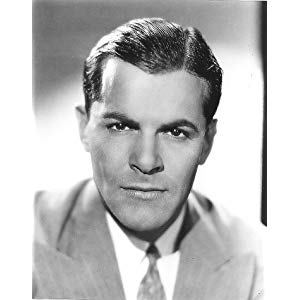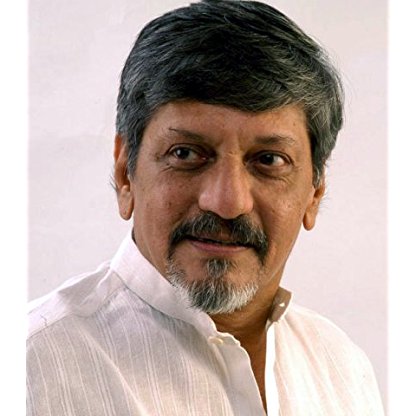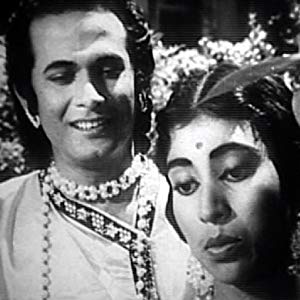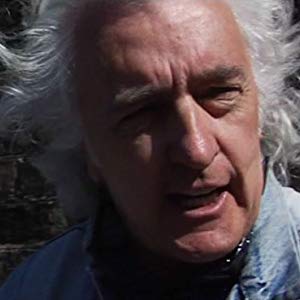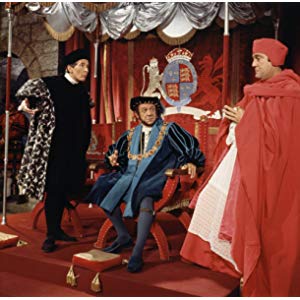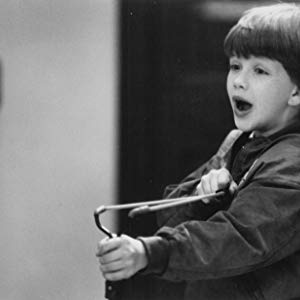Age, Biography and Wiki
💰 Net worth
|
The Woman Accused (1933)
|
$275 /week |
|
Murders in the Zoo (1933)
|
$275 /week |
|
Under the Tonto Rim (1933)
|
$275 /week |
|
Königsmark (1935)
|
$5,000 |
John Davis Lodge was the grandson of Massachusetts Senator Henry Cabot Lodge ) and the brother of Henry Cabot Lodge, Jr.
There was a saying in Boston, portraying the capital of the Bay State as "the land of the bean & the cod/Where the Lodges talk only to the Cabots/And the Cabots talk only to God." John Lodge was both a Cabot AND a Lodge, a thorough and thoroughly bred blue-blood to boot. However, before realizing that politics flowed through his veins, John Lodge - who was born in Washington, D.C. - humored himself with acting, that other public speaking sport that ranks among the world's oldest professions, and it was as an actor that the general public first got to know him.
John was born a year after his brother, debuting in the world on October 20, 1903. His father was the patrician playwright and poet George Lodge and his mother was the former Matilda Frelinghuysen Davis. He grew up in Washington and in Paris before being educated at the Evans School in Mesa, Arizona and the Middlesex School in Concord, Massachusetts. He attended Harvard College (Class of 1925) and Harvard Law School ('29), with a year of graduate study at Paris' Ecole de Droit in between. At Middlesex, he had indulged his interest in school theatricals, and he continued as an amateur thespian while matriculating at Harvard, playing leads in Hasty Pudding Club shows and French Club productions.
It was in Cambridge, Massachusetts during his undergraduate days that he met his future wife, the Italian-born Francesca Braggioti. While men played female roles in drag at Hasty Pudding Club shows, this was not so at the French Club theatricals (where the plays were presented in the French tongue). Francesca, who was both a dancer and a choreographer, often appeared in the French Club plays when there was wont of a female. The couple were married in 1929.
The newlyweds settled in New York City, where Lodge obtained employment as a law clerk in a prestigious Wall Street firm. In 1930, the couple's daughter Lily Lodge, a future actress and drama coach, entered the world with a kick of her wee legs and a hearty scream. Lily's mama Francesca, ever the trouper, pursued her own dance career after recovering from the birth, branching out into acting on Broadway and at small theaters when she wasn't kicking up her own heels. While Lilly's papa John didn't join his wife for any professional tripping of the light fantastic, he did indulge his own acting bones by joining Francesca in the New York Amateur Comedy Club's production of Noël Coward's "The Young Idea." The Coward comedy (the credits for which claim "The Snarks" as producer) played three performances on Broadway in March 1932.
It was the Great Depression, and despite John Lodge's patrician background, Francesca felt the need to generate some coin (gold specie wasn't outlawed until 1933 by President Franklin D. Roosevelt - Groton '00; Harvard '03, though he claimed allegiance to the Class of '04 despite finishing his undergraduate studies in three years - who most people of Lodge's class considered a class traitor) by hiring on to dub Greta Garbo's newly made sound films into Italian. Garbo had been a silent-film superstar in Francesca's native Italy, and the task was an important one, as the proper presentation of a speaking Garbo was critical to her future success in Italy. The job necessitated that Francesca move to Culver City, California for six months to perform the task at the Metro-Goldwyn-Mayer studio.
Thus, fate intervened in John Lodge's life, separate from the accident of his birth. In the late summer of 1932, he took a vacation to California to join Francesca. In Santa Monica, while playing in a celebrity tennis tournament, he was spotted by talent agent Ad Schulberg. Lodge agreed to a screen-test, which was scripted by his prep school buddy John Lee Mahin, a successful screenwriter. The screen-test led to an offer of a six-month contract from Paramount Pictures at $75 a week.
Lodge's patrician family was aghast that he would even think of such as thing as leaving his law career for the then-disreputable "profession" of movie-making. For six weeks, Lodge dithered over accepting the offer. Paramount, anxious to sign the tall and handsome blue-blood, upped its offer to $275 a week (approximately $3,300/week in 2005 dollars), which at the time was a considerably greater sum than most New York City lawyers earned. Lodge signed the contact. While he did understand his family's dismay over his uprooting himself from a respectable avocation in the upright and proper Establishment East for a Prodigal Son-like journey to the Babylon on the sun-kissed and faintly wicked Left Coast to live the life of a Hollywood player, what he didn't count on was Mae West. His family was concerned over his new career route, while - if gossip was correct - Miss West was sure to be concerned over another root entirely.
As soon as the Paramount publicity department began ballyhooing the signing of their latest discovery, Mae West - who was not only Paramount's biggest star but had single-handedly taken the studio out of bankruptcy - decided she wanted the handsome young Lodge to play the male lead in her new movie, "She Done Him Wrong," an adaptation of her notorious stage hit "Diamond Lil." Lodge heard about West's interest, and as he was in no desire himself to further humiliate his family by associating with the notorious Mae West (West had been arrested and jailed for obscenity in New York in 1928 over her play "Sex"), he decided to nix the role. Lodge informed Paramount that he would not accept West's offer to co-star in her new picture and that he would prefer to learn the movie-acting craft by being cast initially in smaller parts.
No unknown had ever turned down such a big role before, but Paramount acquiesced. Lodge would later express regrets over his refusal of the part in "She Done Him Wrong," which became one of the top box office hits of 1933 and made the man whom Mae West chose to replace him in the role - Cary Grant - a star. Her first film at Paramount, "Night After Night," had introduced George Raft to Hollywood. No, John Lodge never became a star, but he did become the governor of Connecticut. Politics turned out to be his fate, after all. But before that milestone, there were movies to make, and a war to be fought.
After making three minor pictures at Paramount, the studio lent him out to R.K.O, where he made George Cukor's classic "Little Women" (1933). The apogee of his career came in 1934-35, when he appeared in two more classics: Josef von Sternberg's "The Scarlet Empress" (1934) in support of the legendary Marlene Dietrich at Paramount, and "The Little Colonel' at 20th Century-Fox, where he portrayed the father of another future actor-turned-politician (and yet another screen legend), Shirley Temple. That was about it. He made one more movie for Paramount, the mystery "Menace" (1934), and then became a freelance. In all, he appeared in 21 movies altogether between 1932 and 1940, including several that were shot in Europe, such as Maurice Tourneur's "Königsmark" (1935), which was made in France, and "Bulldog Drummond at Bay" (1937) and "Queer Cargo" (1938), which were shot in Great Britain. (John Lodge thus becomes an answer to a trivia question: name the actors who have played Bulldog Drummond.)
In January 1941, Lodge returned to Broadway after his less than auspicious 1932 interlude to appear as "The Young Man" in the musical "Night of Love." The musical, produced by the Schuberts, lasted twice as long as Lodge's previous engagement, closing after seven performances. He had better luck in his next play, Lillian Hellman's anti-fascist drama "Watch on the Rhine," in which he played David Farrelly. The play opened at the Martin Beck Theatre on April 1, 1941 and closed eleven months later, on February 21, 1942, bowing out after a total of 378 performances. John Lodge was ending his acting career with a hit.
World War II came to the United States during the run of his last play, and Lodge became a naval officer in August 1942. Capitalizing on his language skills and his molarity with Europe, the U.S. Navy made Lodge a liaison officer between the French and U.S. Fleets. In his over-three-years of service, Lodge reached the rank of Lieutenant Commander and was decorated with the rank of Chevalier in the French Legion of Honor and with the Croix de Guerre with Palm by General Charles de Gaulle. (He would later make the rank of Captain in the U.S Naval Reserve.) After he was demobilized, in January 1946, Lodge made his home in of Westport, Connecticut and joined the family business: politics.
In November 1946, he became the second movie actor ever elected to high office, winning a seat in the U.S. House of Representatives as a Republican. (The Democrat Helen Gahagan Douglas had become the first when she was elected from California's 14th District in 1944.) He won a second term in 1948, but resigned his seat in 1950 to run for governor. He was elected, and took office as Connecticut's 50th governor in January 1951. His wife, Francesca, proved to be the most active First Lady in Connecticut history, opening the governor's mansion to the public. She served as a patron of the arts, promoting concerts and theater and serving as a founding member of the American Shakespeare Festival in Stratford, Connecticut.
After his bid for a second gubernatorial term ended in defeat in 1954, President Eisenhower appointed Lodge U.S. Ambassador to Spain, where he served from 1955 to 1961. While the Republicans were out of power in Washington during the 1960s, Lodge was the National President of Junior Achievement, Inc. from 1963-64, served as a Delegate and Floor Leader at the 1965 Connecticut Constitutional Convention, and was the Chairman of the Committee on Foreign Policy Research Institute at the University of Pennsylvania from 1964-69. After Nixon was elected President in 1968, he appointed Lodge as U.S. Ambassador to Argentina, where he served from 1969 to 1974. Later, for the most successful actor-cum-politician in history, President Ronald Reagan, he served as the U.S. Ambassador to Switzerland from 1983-85 and as a member of the U.S delegation to the United Nations. (Lodge's tours as the ambassador to Spain and Switzerland were fitting, as he was a bigger star in Europe than he had ever been in the United States.)
John Davis Lodge died in New York City on October 29, 1985, nine days after his 83rd birthday, and was buried at Arlington National Cemetery. The Connecticut Turnpike (Interstate-95) was named the Governor John Davis Lodge Turnpike in his honor. His widow, Francesca Lodge, died on February 25, 1998 at her home in Marbella, Spain. She was 95 years old.
